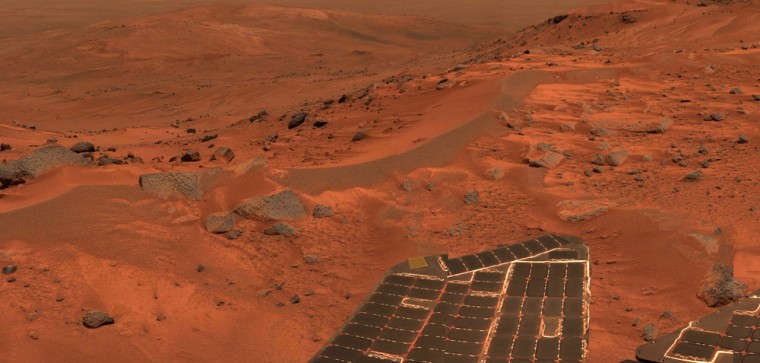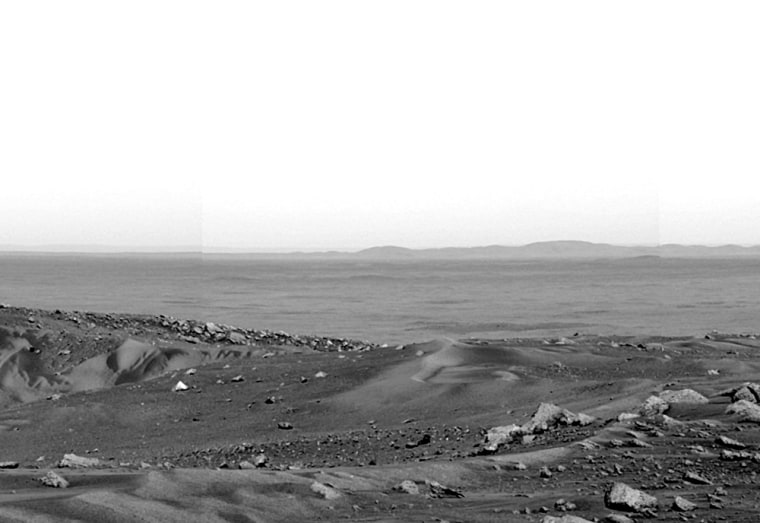NASA’s Mars rover Spirit is experiencing the robotic high life — literally — now that it has reached to top of Husband Hill after a slow, year-long climb.
Perched some 270 feet — about the height of the Statue of Liberty — above the plains of its Gusev Crater landing site, Spirit has returned images of stunning new vistas that include a potential winter refuge as the Martian seasons progress, mission scientists said Thursday during a press conference at NASA’s Washington, D.C. headquarters.
“That’s no Mt. Everest, but it’s a heck of a climb for our little rover,” Steve Squyres, principal investigator of the rover’s science mission at Cornell University in Ithaca, New York, told reporters. “When we first touched down at Gusev Crater on Jan. 4, 2004, the Columbia Hills looked impossibly far away.”
Spirit spent 591 days roving across the 1.5 miles (three kilometers) between its landing point and the summit of Husband Hill, one of a network of rises in the Columbia Hills chain.
The rover reached the base of the Columbia Hills, a chain named after the lost STS-107 astronauts — in June 2004. The layered rocks, which Spirit later found were changed by water in the planets ancient past, and tricky terrain were a welcome change for researchers, who until then found almost nothing but the same, basalt rocks — the most basic type of rock — day after day of exploring Gusev Crater.

“The rocks in the Columbia Hills are nothing like the basalt on the plains,” said Ray Arvidson, deputy principal scientist for the rover science mission at Washington University in St. Louis, Missouri, during the press conference. “Water was involved in practically every one that we’ve seen so far.”
Squyres said Spirit engineers and researchers will spend the next week to 10 days discussing when to leave the summit, though the rover will likely not stay atop Husband Hill for many months.
Researchers have already picked out a long-distance target dubbed Home Plate in basin to the south of Spirit’s current location. A north-facing slope on the side of another hill, known as McCool Hill, may offer a prime spot to weather the Martian winter since the rover’s solar arrays would be angled toward the Sun to collect the most sunlight.
“The deciding factor will be how good the geology is,” Squyres said of the time it will take to descend Husband Hill. “I think going downhill has the potential to go a bit faster, it’s easier to go downhill with these vehicles than going up.”

Spirit and Opportunity are currently funded through December 2006, with scientific targets set in six-month sections, NASA’s Mars Exploration Program chief Doug McCuistion said.
While the rovers show some signs of age — the rock grinding bits of Spirit’s rock abrasion tool are so worn, they’re only useful for brushing targets clean — they are still generating ample supplies of power, rover handlers said.
“As long as these vehicles remain healthy and continue on their science return we’ll continue,” McCuistion said. “An asset on the [Martian] surface like this is invaluable…and we certainly don’t want to cut them off.
